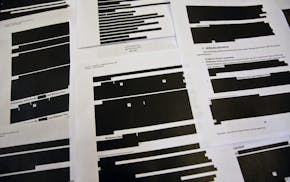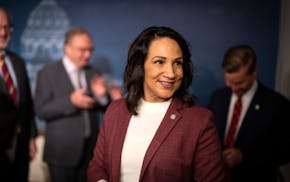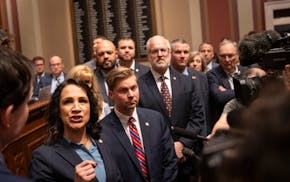More Minnesotans than ever before are believed to have cast ballots in Tuesday's election, which could potentially produce one of the highest voter turnout rates as well.
Minnesota Secretary of State Steve Simon estimated Wednesday that 3,223,146 voters participated in the election, either as part of the record surge in early absentee balloting or by voting on Election Day.
The unofficial 78% turnout rate would be the most for the state since 2008, and Simon said that percentage could grow as high as 80% — a level not seen since the 1950s. By comparison, more than 2.6 million voters participated in the 2018 midterm election — a 64% turnout rate — and more than 2.9 million voted in 2016's general election — a rate of 74%.
"People really took seriously the opportunity to vote in different ways," said Simon.
In Minneapolis, more than 237,000 ballots were cast in Tuesday's election, breaking the city's record for an election turnout. Voters also cast more than 170,000 early ballots, largely to prevent the spread of COVID-19. Officials said about 80% of registered voters in Minneapolis participated in the election.
Unofficially Ramsey County saw 297,146 voters, which is 88% of registered voters in the county; St. Paul saw 152,234 voters, or 85% of registered voters in the city.
Statewide, a record 1,906,828 absentee ballots were processed as of 5:30 p.m. Wednesday, with 230,930 outstanding. Simon cautioned that the number of unreturned ballots includes those sent to voters in jurisdictions that use only mail-in voting. Not all of those people participated in the election; other voters are believed to have requested mail ballots in advance before voting in person instead.
Simon urged patience as some counties continued to tabulate results on Wednesday. The pace of counting and reporting votes has been about as expected, he said.
"We are exploring new territory in a complex system," Simon said. "And the purpose of the system this year is to give everyone a voice in our democracy. So the slow process is very much by design."
The Legislature earlier this year approved a law that gave counties an extra two days to count ballots. Under a state court agreement in July, Simon agreed to extend by one week the deadline for receiving and counting ballots postmarked by Election Day.
But the extended deadline came under a GOP challenge, and last week the Eighth U.S. Circuit Court of Appeals ordered that ballots arriving after Election Day be set aside.
While those ballots will be segregated, Simon said election officials will still count them. He also noted that while the Eighth Circuit case deals only with the presidential race in Minnesota, future challenges could take aim at post-Election Day vote counts in down-ballot races as well.
Given former Vice President Joe Biden's wide margin over President Donald Trump in the state, Simon predicted that the Trump campaign would not challenge absentee ballots in Minnesota. As of midday Wednesday, state officials reported no other litigation related to Tuesday's election.
At least three Minnesota House races on the verge of automatic recounts could be affected by how many outstanding absentee ballots are processed in their districts. Meanwhile, state officials said they would still count mail-in ballots received by Nov. 10 and planned to provide daily tallies of how many arrive until then.

Want to share info with the Star Tribune? How to do it securely

'Safe recovery sites' would offer syringes, naloxone and more to people using drugs. The plan could be in peril.
New Minnesota GOP leaders seek peace with party's anti-establishment wing

Who is Republican Lisa Demuth, Minnesota's first House speaker of color?

